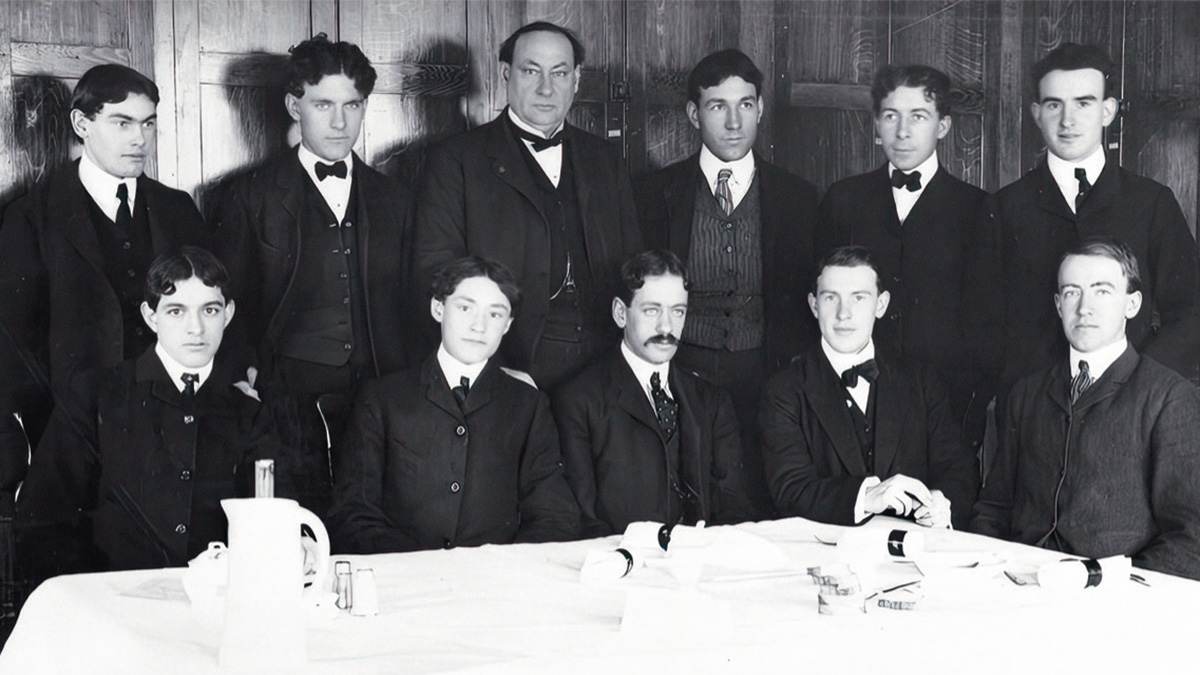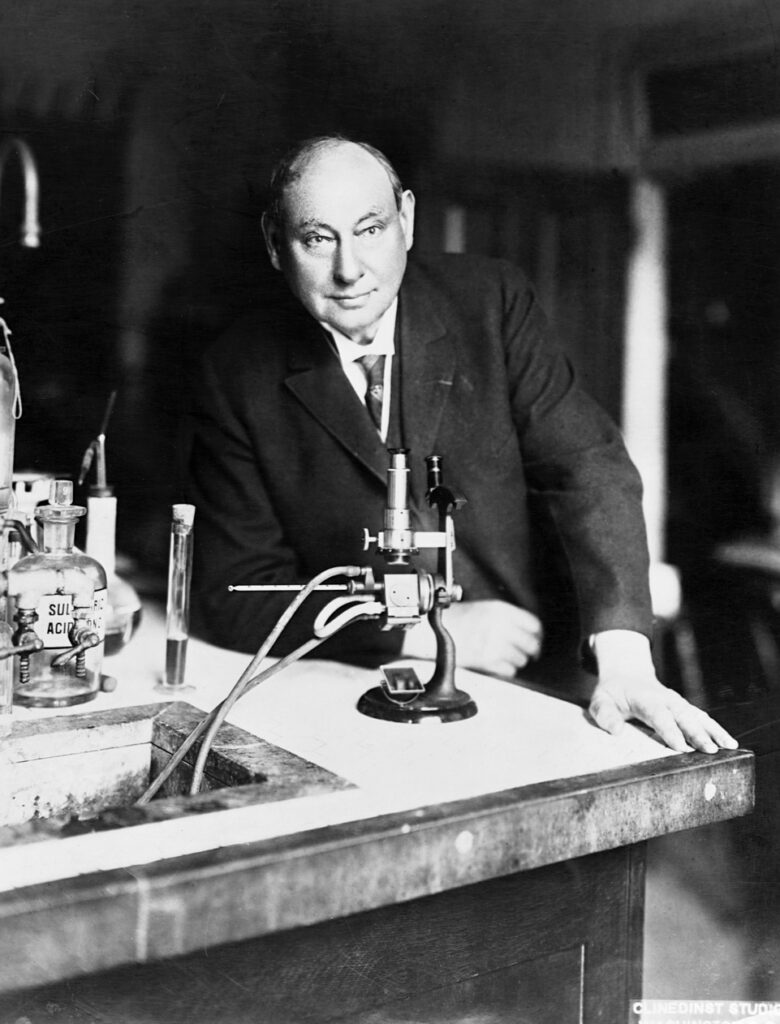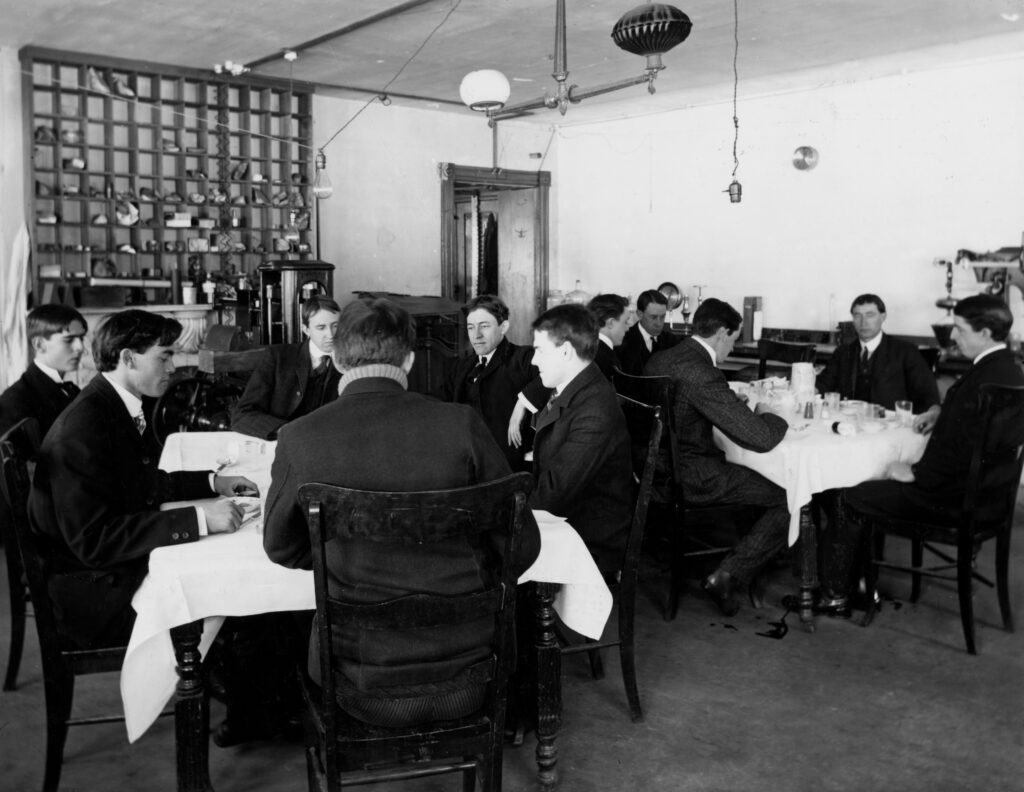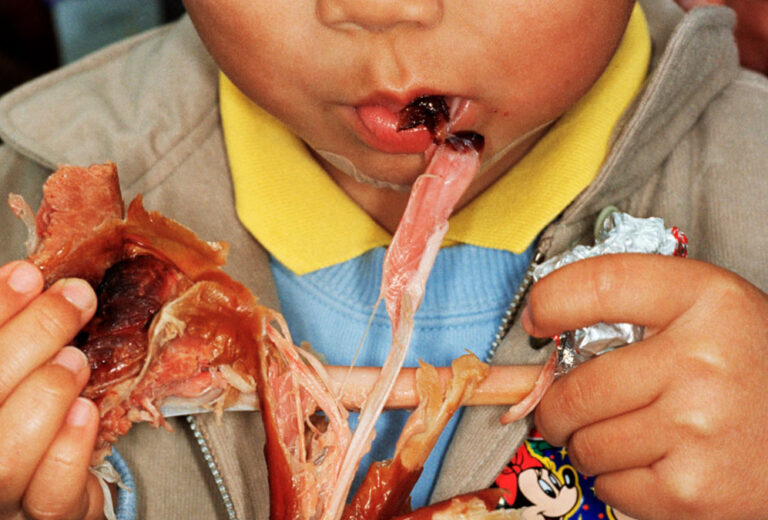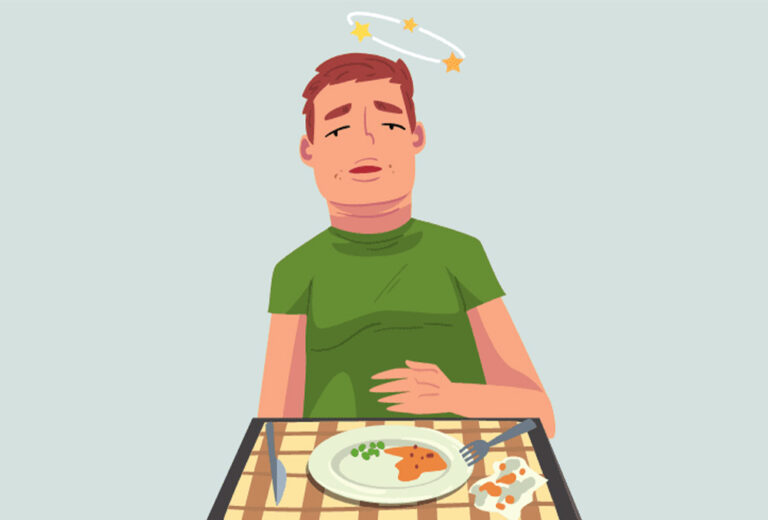Click here to read the Spanish version.
The image was striking in its solemnity: the twelve members of that exclusive Washington, D.C., dining club, young men chosen from hundreds of applicants, sat in dark oak, high-backed chairs, six to a table, in their three-piece suits and silk ties. The tables were dressed in white linen tablecloths in an otherwise rather plain dining room with bare white walls. Membership of the twelve to that singular club included three full meals a day. Wine for all. For six of them, with a dose of poison.
To be fair, it must be explained that the poison was carefully administered and monitored. The experiment, which began in 1902, was the brainchild of government chemist Harvey Washington Wiley, who had long been concerned about the novel preservatives and colourings being applied to food. Until Wiley came along, no one had bothered to find out what effects these additives might have on a human being. And if no one knew the effects of a particular additive, there was no point in passing laws to protect consumers.
Wiley set out to change things one additive at a time. The first was borax. Today we are more familiar with borax in cleaning solutions, although it is also used in pesticides and antifungals, as well as a preservative for taxidermy. The preservative properties of borax made it attractive to food producers from the 1870s onwards, particularly those in the meat and butter business.
Butter producers published studies suggesting that the American consumer actually preferred the slightly metallic taste of borax butter. Surely, said the meat manufacturers, a little borax is better for humans than an accidental mouthful of rancid meat. “I mean, we all eat embalmed meat, we know it and we like it,” the president of a company famous for its borax-based preservative once said.
Milk ‘cut’ with plaster and chalk
In the history of food safety in the United States – and by its subsequent impact, arguably around the world – one name stands out above all others: Harvey Washington Wiley. As a chemist and public health advocate, Wiley dedicated his life to combating hazards and deceptive practices in the food industry in the late 19th and early 20th centuries.
His tireless fight for food legislation and regulation laid the groundwork for consumer protection in the country. But his work did not come out of the blue. As head of the Chemistry Department of the U.S. Department of Agriculture, he was impelled to investigate the alarming situation that had led to the rise of adulterated products that was causing thousands of deaths across the nation, especially among children.
At the turn of the century, millions of immigrants were landing on every coast of the United States each year to seek a future in the vast, emerging nation. But the sheer size of the country was deceptive, for despite its vast prairies, it was only a few cities that took in more newcomers than the authorities were able to handle. Overcrowded families, street crime and abuses of power were the order of the day, as were food shortages, as producers were unable to respond to the unstoppable demand for food.
A little borax in the tea
Appointed head of the Chemical Division of the United States Department of Agriculture (USDA) in 1883, Harvey Washington Wiley decided to take up his crusade against adulterated foods and medicines in an effective if somewhat questionable way: by testing them directly on healthy individuals. Borax was the first additive on the table, so to speak, for his volunteers, whom the newspapers had dubbed the Poison squad. Wiley chose borax because its use was widespread and studies had shown it to be relatively safe, but not 100 per cent safe.
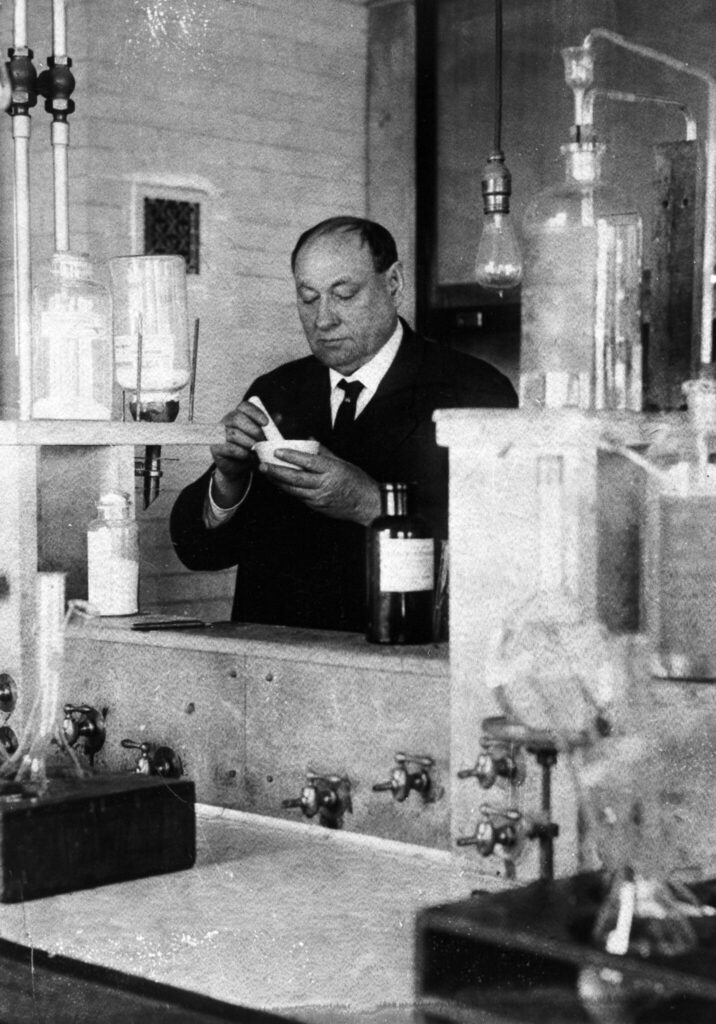
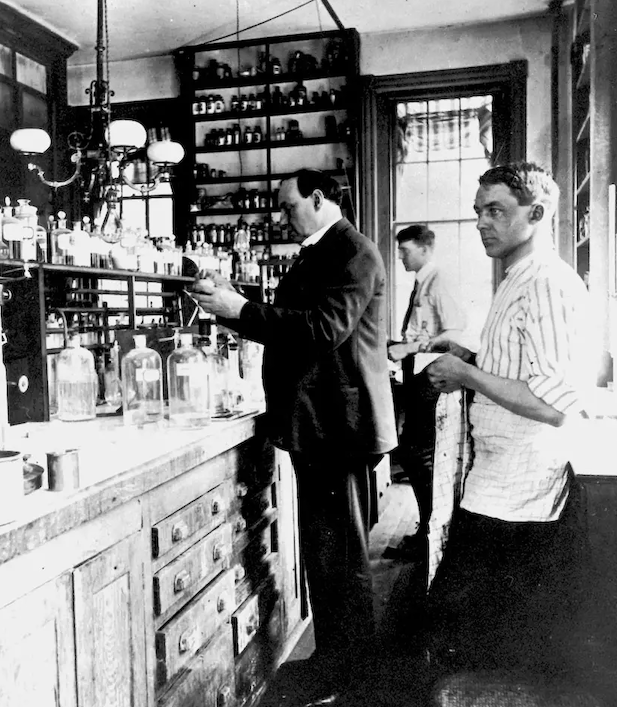
Although he thought it would take time for his volunteers to suffer truly harmful effects, long enough for him to reach some conclusions with that test, the reality is that the participants soon discovered which table had borax-infused butter and milk on it and began to avoid those foods. In response, Wiley changed the experiment so that the additives were now administered in capsules and diners were carefully observed to ensure they swallowed their dose.
Wiley divided the volunteers into two groups and alternated their exposure to borax: one week, the first group would take the capsules; the next week, the second group would receive the doses. Wiley knew that this kind of rotation might not give the clearest results, but he was concerned about the health of his volunteers. Before the fifth round, half of his diners dropped out of the trial due to various ailments, such as headaches and stomach pains. The dose given had been high, but the reality was that borax was present in so much food that a voracious eater could eat the same amount in a day. In this sense, the object of Wiley’s study was to estimate the cumulative effects that a lifetime of borax ingestion could have on a person.
But borax was just the tip of the spear. Just as alarming, for example, was the presence of arsenic and lead in sweets to make them shinier and more appetising. Or formaldehyde to preserve milk. Or copper sulphate to make peas nice and green and palatable.
Everywhere Wiley looked, manufacturers were extending the life of their perishable products by more than questionable means and using adulterants to make them more attractive. They were also extending the quantity of their products by adding all sorts of nonsense. Spices frequently contained ground coconut shells. The coffee samples tested by Wiley’s lab contained no coffee at all. Whisky was made from ethyl alcohol diluted with water, dyed brown with tobacco extracts, tincture of iodine, burnt sugar or plum juice.
In search of regulation
From his post at the Department of Agriculture, Wiley made protecting the health of the American people a vital project, whether that meant making sure consumers got what they thought they were buying, investigating additives in food products, or taking up arms against powerful corporate interests. For a second study he set up what was dubbed the “Breakfast Test”, in which another group of young volunteers ingested food adulterated with various elements over several months. The results, unsurprisingly, were alarming. Wiley had to stop the sodium sulphite test halfway through and only three of his twelve volunteers made it to the end of the sodium benzoate test. The sign in front of the canteen was no joke: “Only the brave will eat today”.
The trials and misadventures of the Poison Squad brought national attention to the need for a federal law to regulate the food industry and protect consumers. But it was not until a million women wrote to the White House in support of such a law that Congress succeeded in passing the Pure Food and Drug Act in 1906.
The food industry had fought tooth and nail to keep the government out of its business and had doled out big money to friendly senators and scientists willing to testify that preservatives were chemically harmless and that, because the compounds prevented spoilage, they also kept countless Americans from getting sick from rotten food.
Wiley’s tenacity prevailed, but the new law had one major flaw: there were no clear standards for food. Early drafts of the bill directed the Department of Agriculture to set purity standards for food products and to determine what was considered adulteration in them. But the industry-backed National Association of Grocery Manufacturers had successfully lobbied for the removal of this language. The new law was actually quite vague; it did not name a single toxic compound that was regulated and made enforcement against adulterated or mislabelled products cumbersome, if not downright impossible.
But it was a start, a first step, and it paved the way for the creation of the Food and Drug Administration (of which Wiley was the first commissioner) and the much stronger Federal Food, Drug and Cosmetic Act of 1938.

